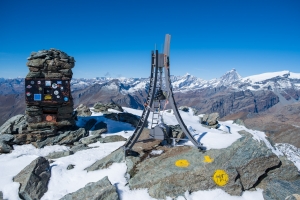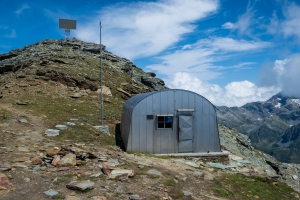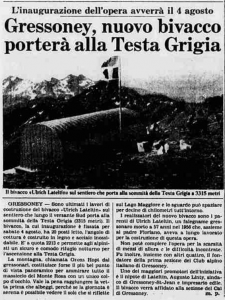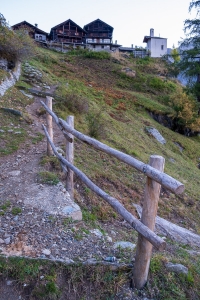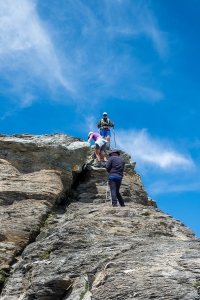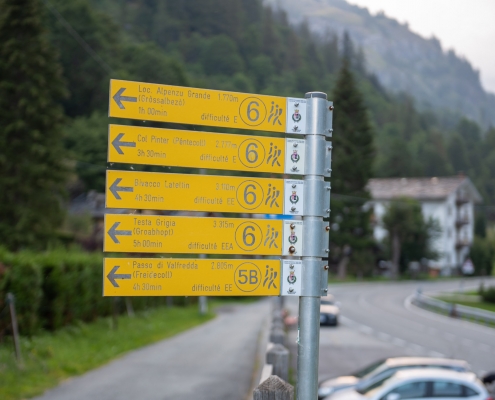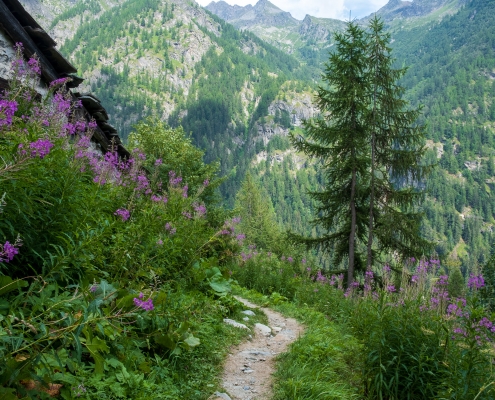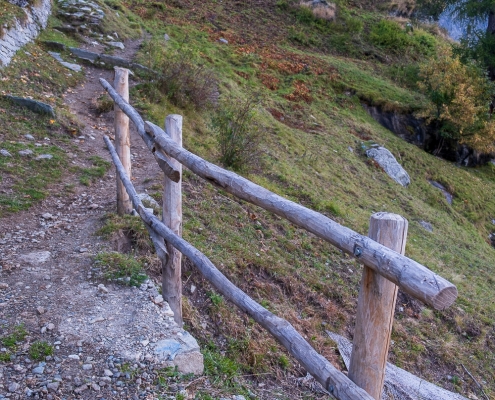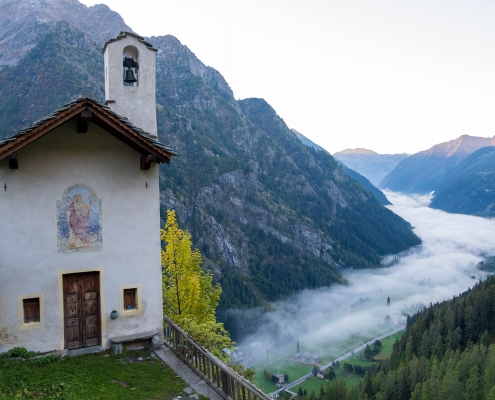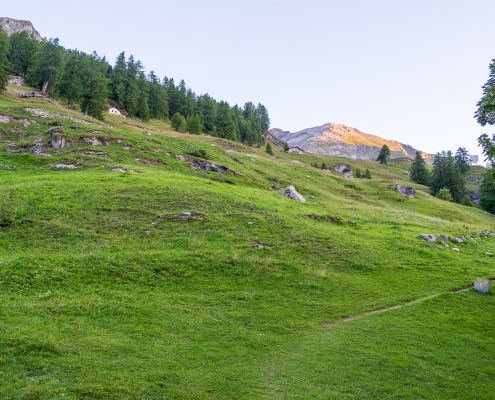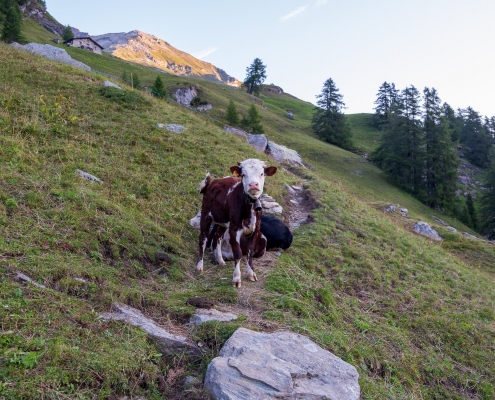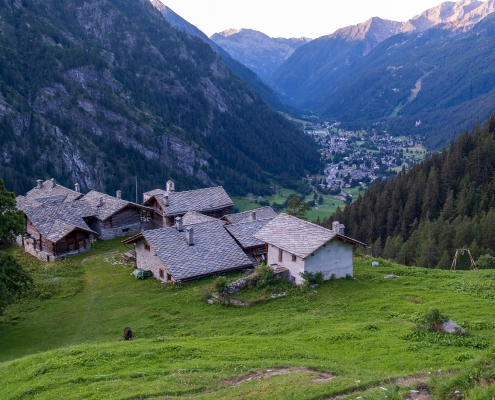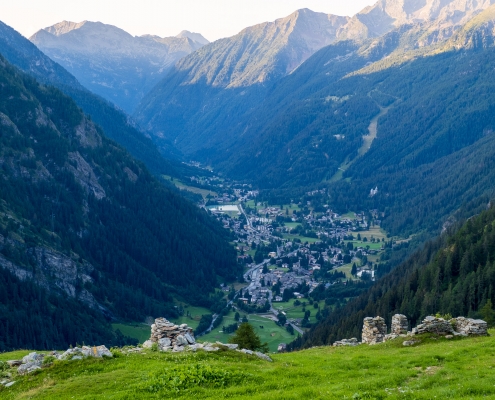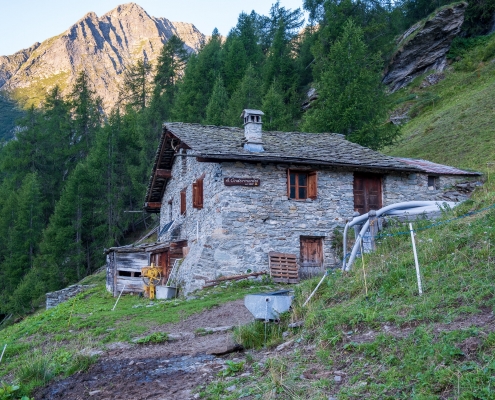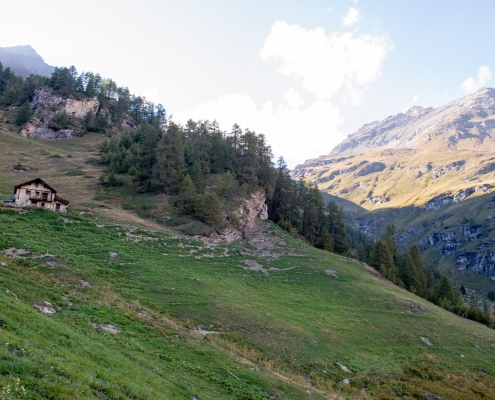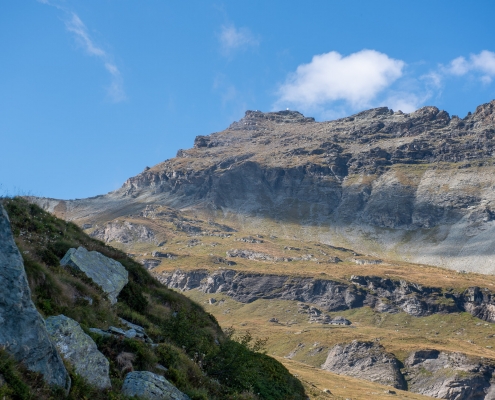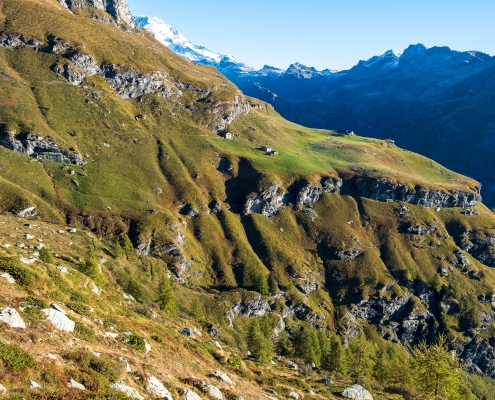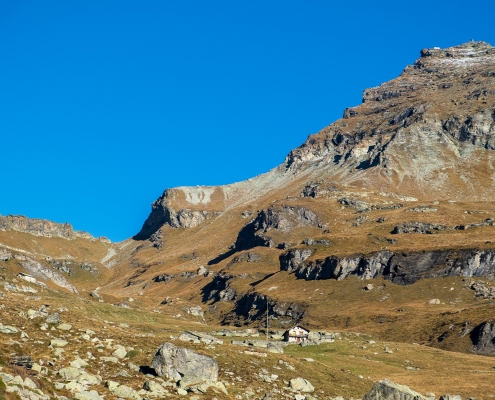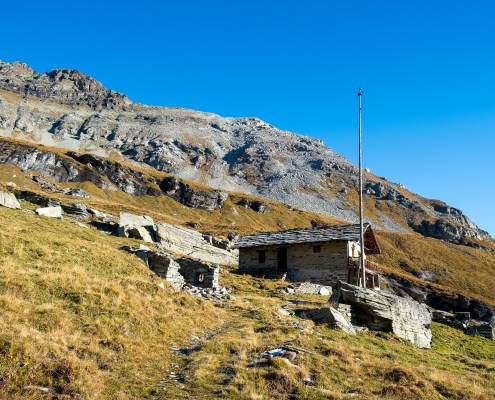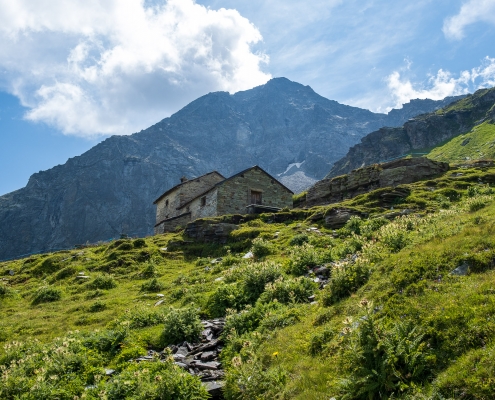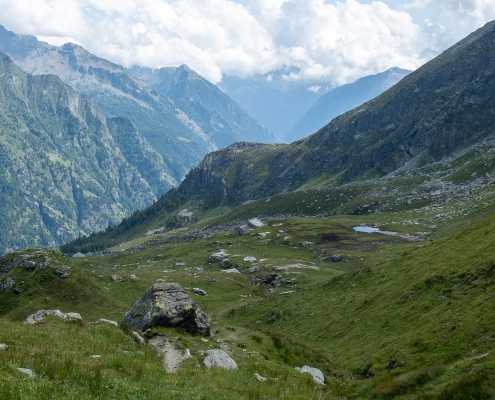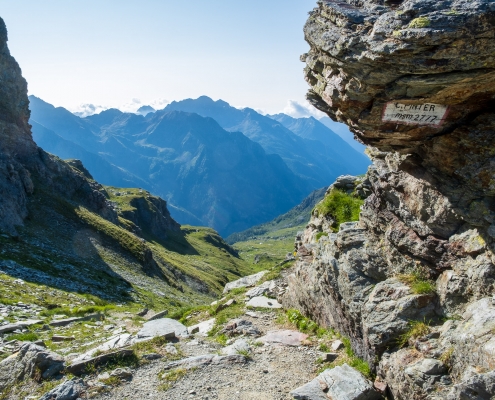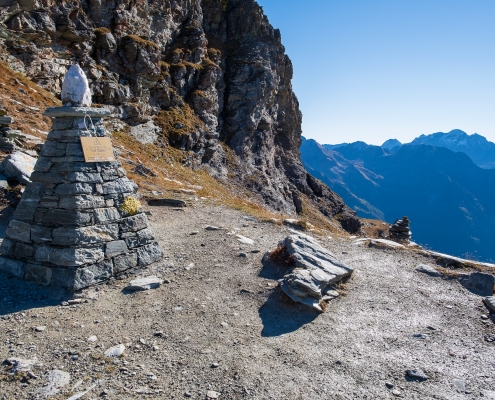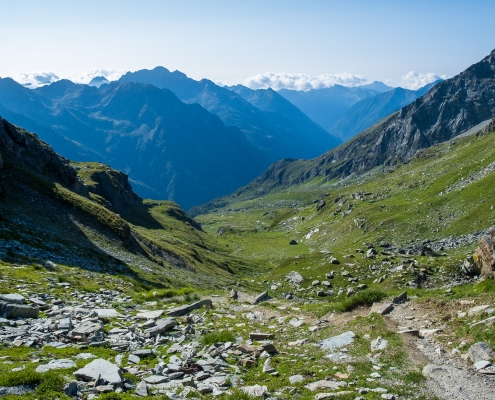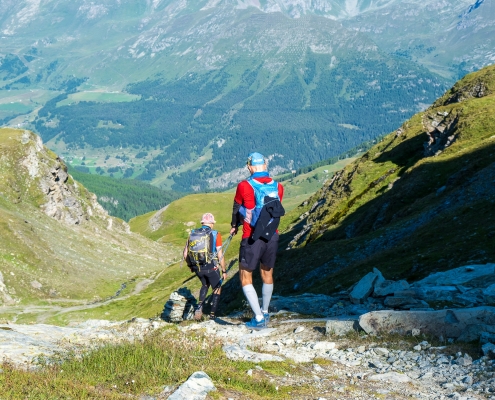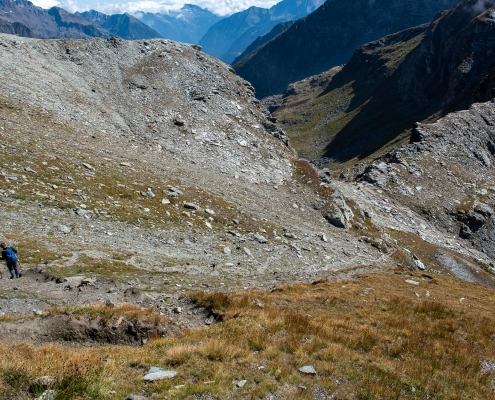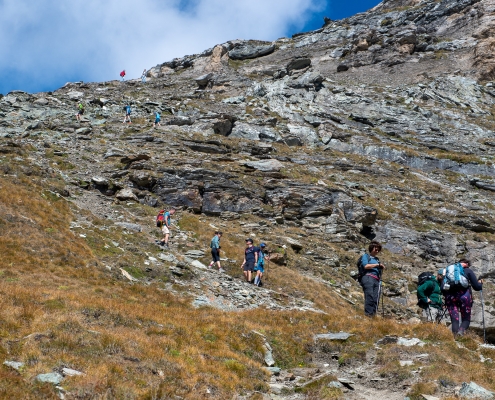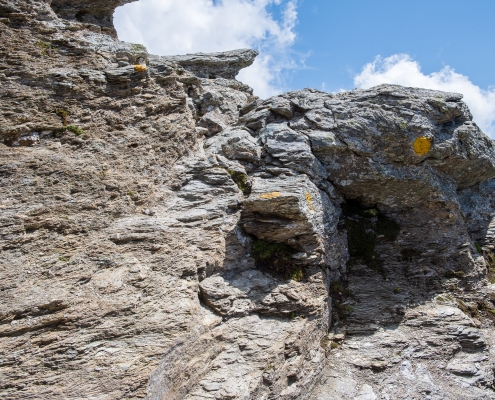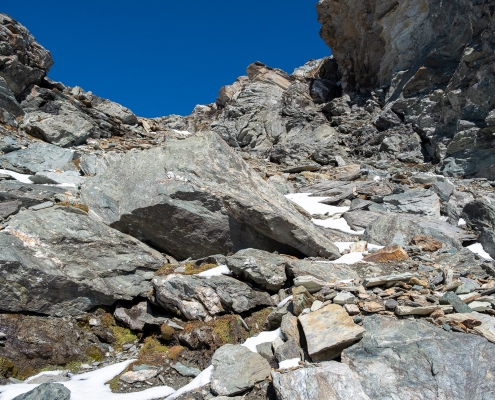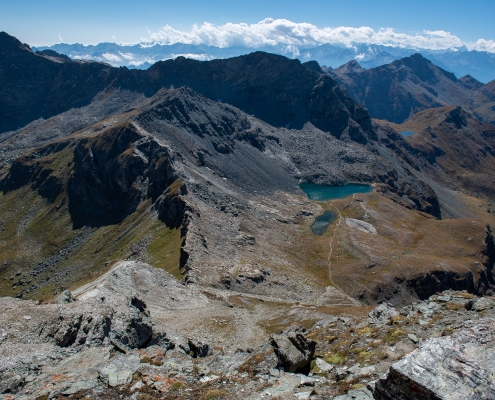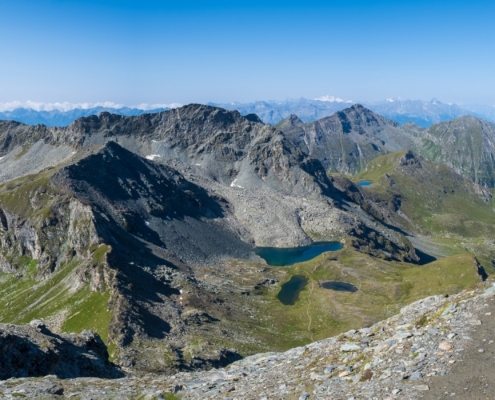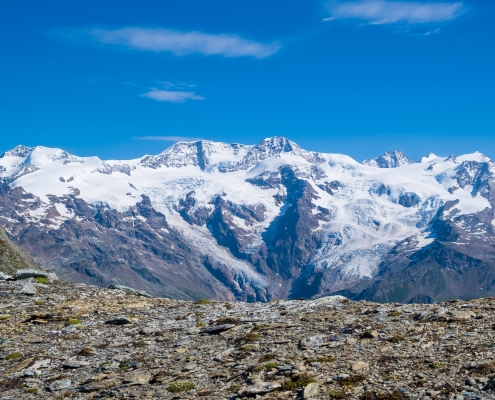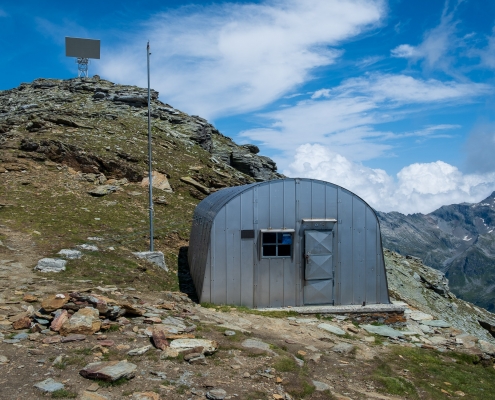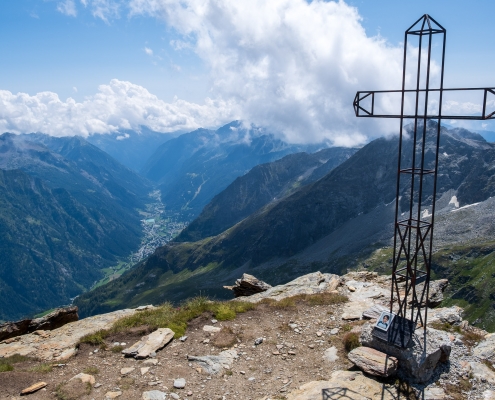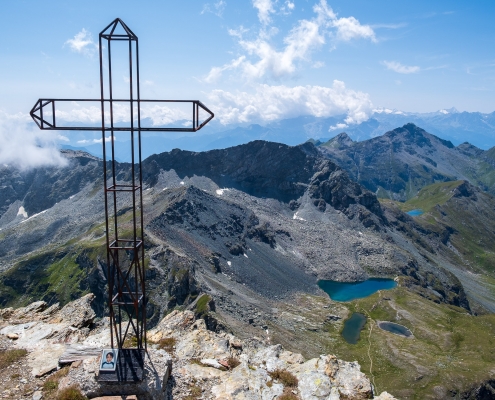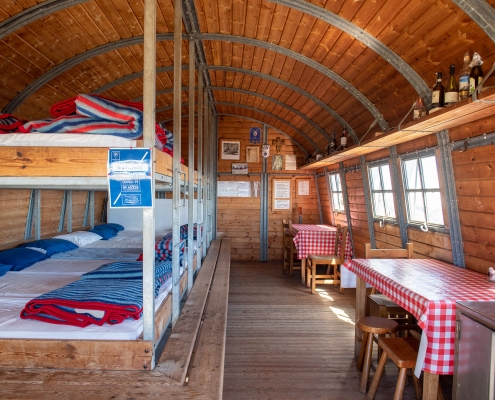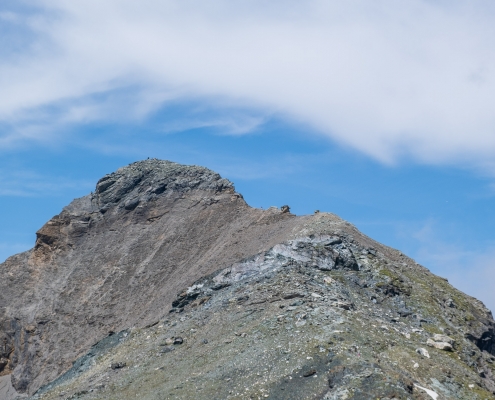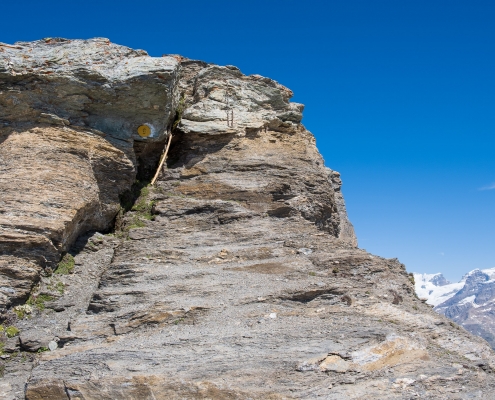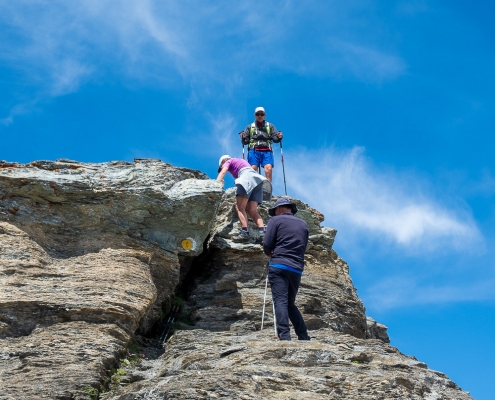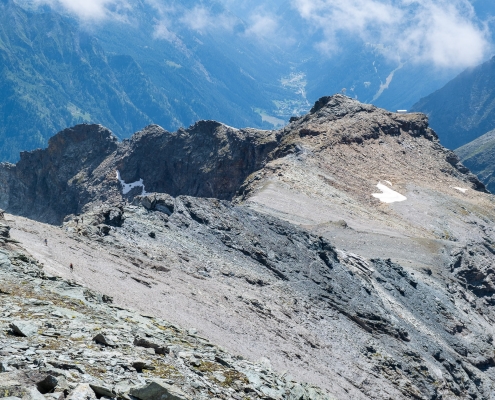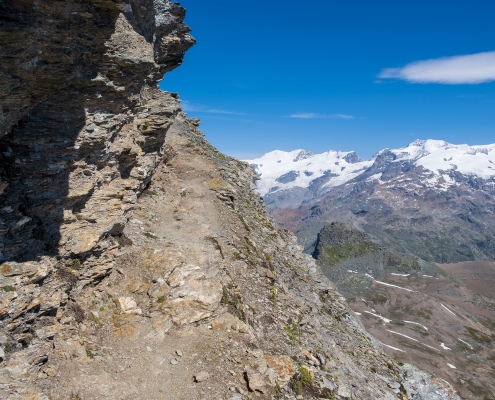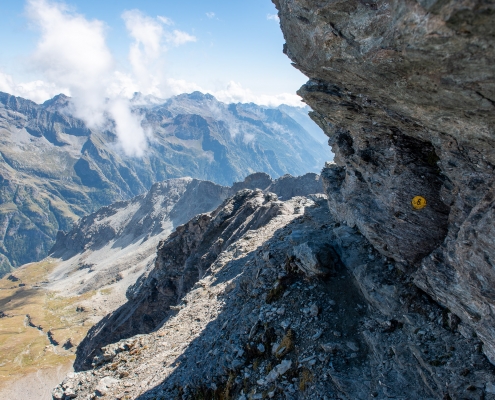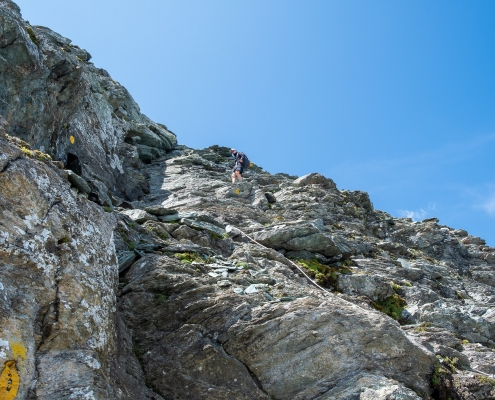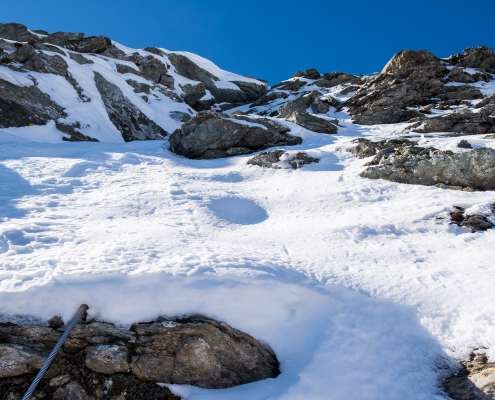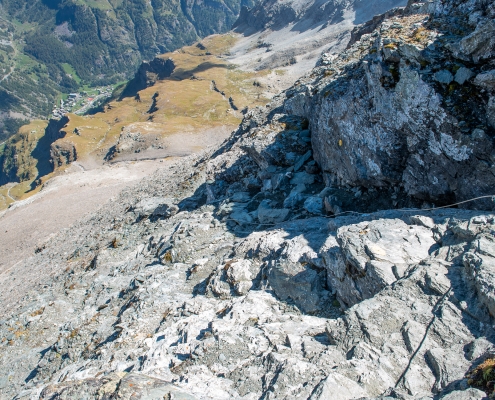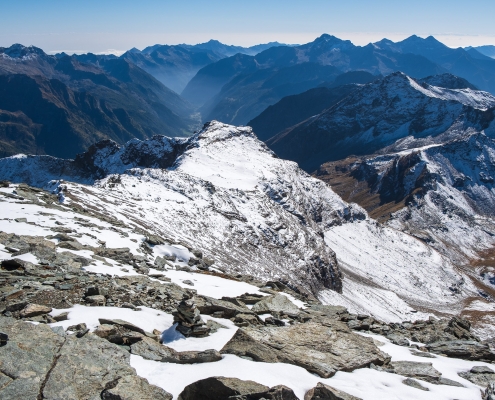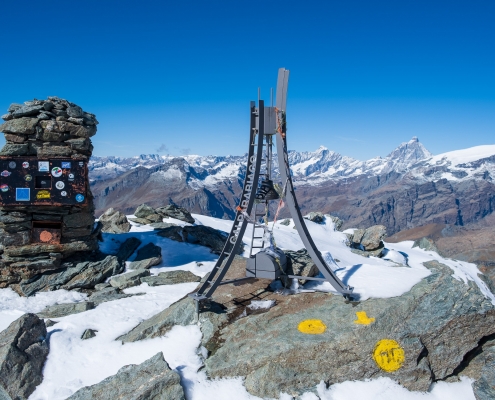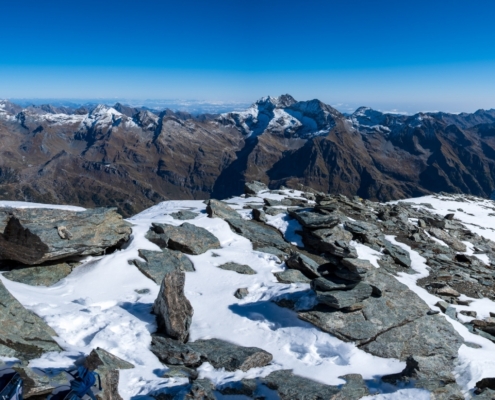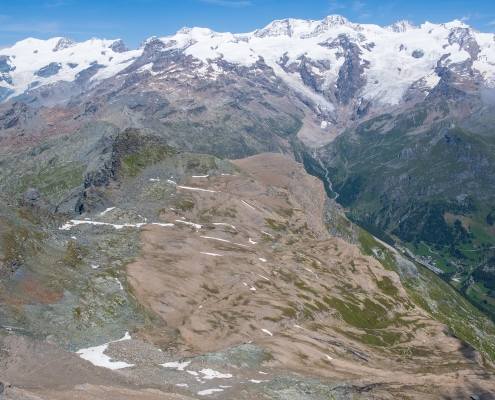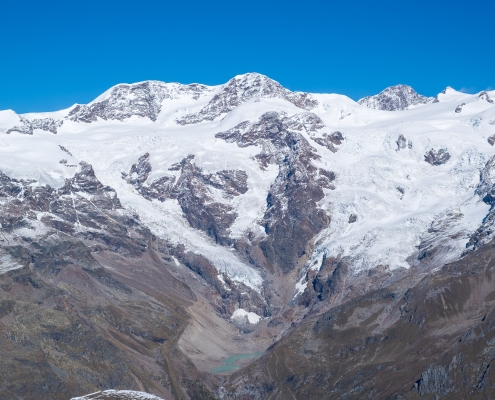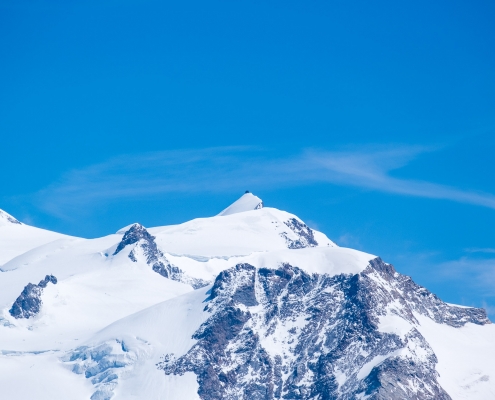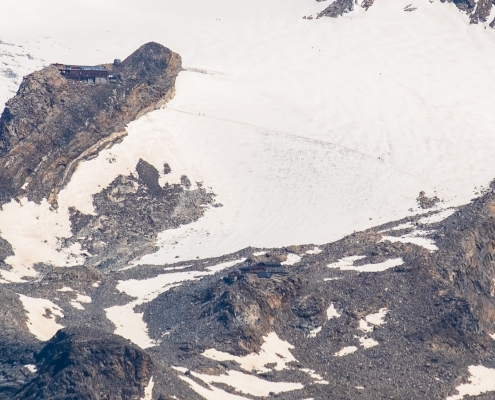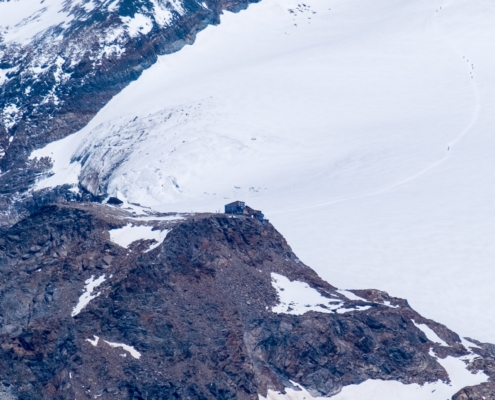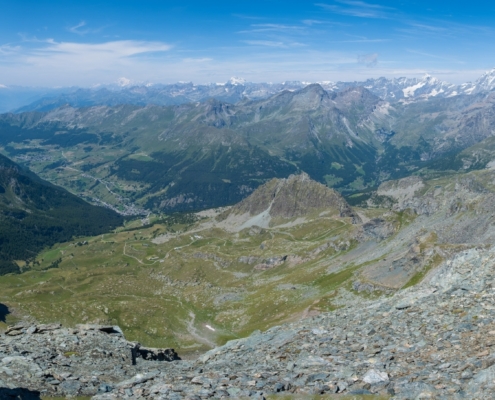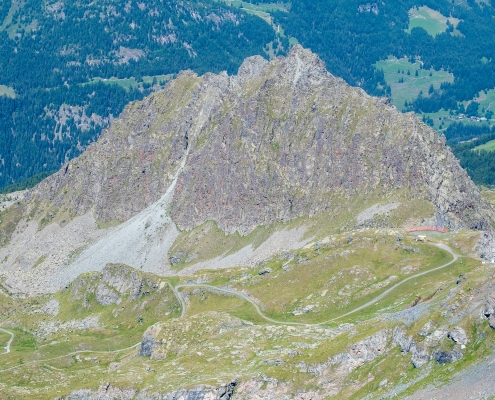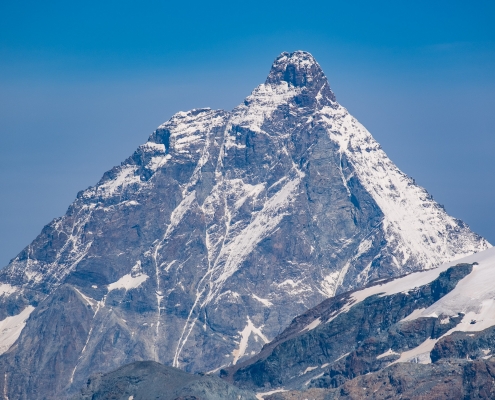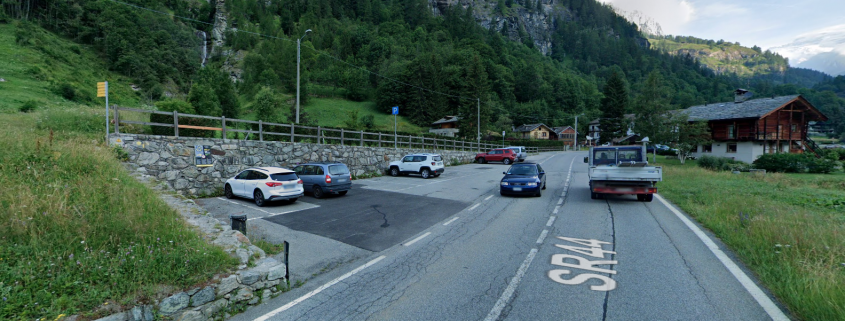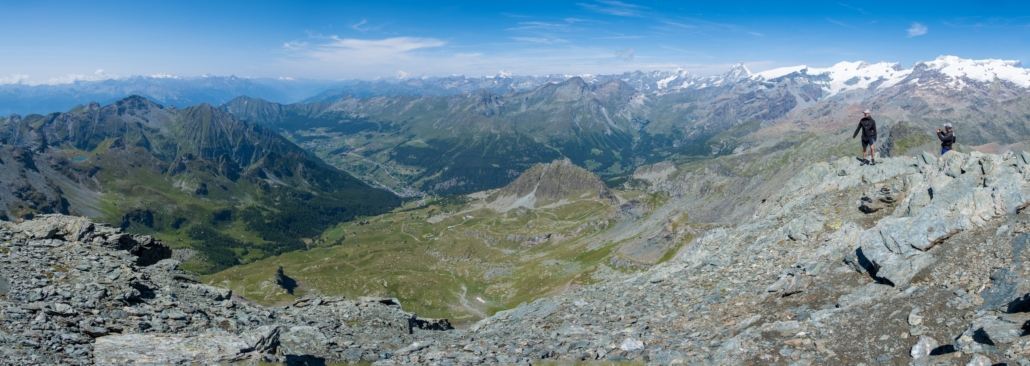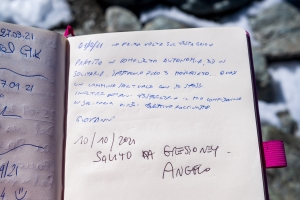Testa Grigia (3315m), Trail 6
from Perletoa inferiore/Onder Perletoa/Tschemenoal to Testa Grigia
Trail 6 starts from Perletoa Inferiore/Onder Perletoa/Tschemenoal and arrives at Testa Grigia (3315m). It is 7595m long and the total positive elevation gain is 1900m.
The approximate time for the ascent is 5h38. The trail is classified as being of EEA difficulty.
Testa Grigia (or Grauhaup or Grengo) is the quintessential mountain for all hikers in the area who dare not go beyond glacier level. It is the highest peak of the two mountain ranges on either side of the Lys, reached directly by a trail with no extreme technical difficulties-a true dream.
The height difference to be overcome to reach it is considerable, but it is still a popular peak also because those who reach it from Val D’Ayas can save about a thousand meters of ascent by getting as far as Ostafa by cable car.
From the summit the view is of course majestic, over the entire Rosa massif, all the major mountain groups of the Lys Valley and the Aosta Valley. It seems that on the clearest days you can even make out Lake Maggiore (a fortune that has not yet occurred to me).
Trail 6 is one of two paths that can be taken to reach the summit. Of the two, it is the one that is slightly longer but less steep and, because of this, the more frequented (also because from Pinter Col onward people up from Val D’Ayas are added). The other is Trail 10C, which starts from Gressoney-La-Trinité: steeper (and therefore less long), and definitely less frequented.
A short distance from the summit, just below Punta Pinter (pre-summit of Testa Grigia) is the wonderful Lateltin bivouac, which has a singular history: in 1950 carpenter Ulrico Lateltin from Gressoney Saint-Jean, together with his father Floriano, began its construction, starting by transporting material to the area where it was to be built.
The project was interrupted due to difficulties in construction and the scarcity of means, but in 1983 that material was found by his nephew Augusto Linty, who had the idea to restart the construction of the bivouac (later inaugurated on August 4, 1984). It is currently owned by the CAI of Gressoney La Trinité. Opposite photo shows an August 1, 1984 La Stampa article announcing its imminent opening. In the bivouac (16 beds) you can stay overnight, provided you can find a place (impossible to reserve): the cost is 3€ which can be paid later by bank transfer, for more information contact the Gressoney CAI (+39 331 7893125, caigressoney@gmail.com).
But the notable points of this beautiful trail are not finished: less than an hour from the start, the trail passes through the stunning village of Alpenzu Grande (in titsch Gròsso Albezò), 1779m, one of the very first Walser settlements in the valley (there is already a trace of it in a document from 1294), unharmed by the advance of time.
The village is partially inhabited only in the summer season. Right in the middle of it is the Alpenzu Grande Refuge, open from June to the end of August, which in addition to dining services also offers lodging. It is so beautiful the village and scenic the location, that it can itself be considered a destination for a short trip. For Alpenzu Grande , in addition to Trail 6, Trail 1W Walserweg passes through, and Trail 5A to Valfredda Pass starts from it.
Two final words about the technical difficulties: the trail is classified as EEA, which means there are equipped sections. There are two such sections, collected in the final section of the route, from the col north of the Lateltin Bivouac: there is a rocky step that one climbs by force of arms clinging to two iron chains, and a rocky gully that leads directly to the summit equipped with two steel cables not essential for progression. From Pinter Col to the col just mentioned, the trail is slippery in places because it is on gravel and scree, but it is not particularly exposed except in a few places. I would certainly recommend wearing a helmet from Pinter Hill on up, because since it is quite busy the risk of falling rocks dislodged from above is by no means remote. Finally, especially for the final equipped gully, it is strongly advisable to wear gloves to avoid injuring yourself while handling the steel cables.

